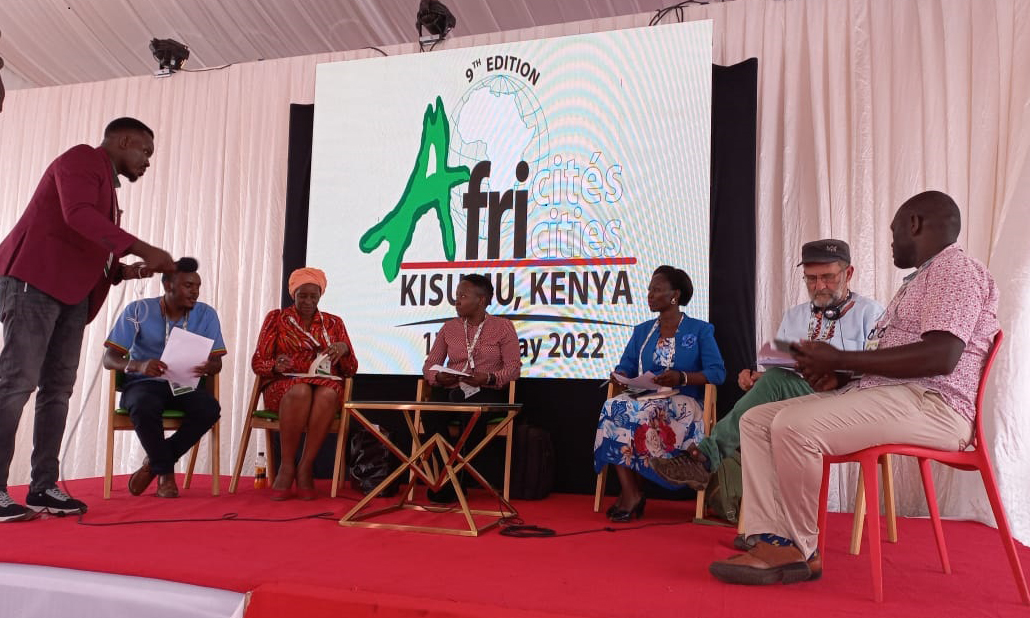 Diplomatic negotiations can be a high-stakes game
Diplomatic negotiations can be a high-stakes game
of poker, with countries attempting to play their cards without giving away
their hands. But for anyone following the preparation of the New Urban Agenda, the United Nations’ 20-year
urbanization strategy, there are already clues as to the potential battle lines
in the global debate over human settlements.
The New Urban Agenda will be adopted in October at
the U. N.Conference on Housing and Sustainable Urban
Development, or Habitat III, which will take place in Quito,
Ecuador. Ahead of that summit, the U. N.has
asked 200 experts in housing, urban planning, architecture, public policy and
finance to tackle the big issues at the foundation of today’s urbanization
debate.
On New Year’s Eve, these 10 “policy units”, as they are called,
each delivered a framework of ideas that together constitute a likely rough
outline for the New Urban Agenda, the first draft of which is expected in early
May. Meanwhile, the policy units are currently working on final drafts of these
papers, which are expected imminently.
[See: Key drafts of Habitat III policy papers open for public comment]
Last month, 16 countries submitted comments on
these frameworks, which were published on the Habitat III website. Many of the comments were technical,
with diplomats having to remind the authors — most of whom come from outside
the U. N.system — that the New Urban Agenda will not
exist in a vacuum. By custom, then, it must refer to its predecessor documents,
a laundry list of international agreements over the past two decades on topics
such as sustainable development, climate change, disaster risk reduction and
road safety.
But other comments — which range from nitpicky
requests for the insertion or deletion of a word to wholesale ideological
disagreements — foreshadow tensions that could bubble up during the
negotiations over the New Urban Agenda, which will take place this spring and
summer before the final showdown in Quito.
With 193U. N.member
states, the published comments from these 16 also offer a sneak peak of which
countries are most engaged in the outcome of the conference. Since countries,
after all, will be the ones to decide on the final text of the New Urban
Agenda, knowing who is paying attention and what they care about will be
important strategically for the constellation of groups lobbying for certain
issues to make their way into the document.
[See: Stakeholders concerned over access to Habitat III negotiations]
Rights or wrong
One of the clearest early divides has come up
around a global “right to the city”. A group called the Global Platform for Right to the City (GPR2C) hopes that this idea constitutes a core part of the New
Urban Agenda, and many of them prepared a policy framework with precisely that
theme. (GPR2C is funded in part by the Ford Foundation, as is Citiscope.)
Called “Rights to the City and Cities for All”, the
outline pointedly calls for this idea to be the centre piece of the new
strategy.
[See: A needed cornerstone: The Right to the City]
There is no universally agreed definition of the
right to the city. The concept generally refers to an inclusionary vision of
cities that provide adequate shelter, employment and public services to all
residents, including traditionally marginalized groups such as women, youths,
minorities, immigrants and the homeless.
The idea is popular among leftist critics who see
contemporary cities as beholden to financial interests and besot by
privatization, resulting in places of increasing inequality where real-estate
speculation trumps the “social” function of land. For example, a privately
owned lot intentionally left vacant to appreciate in value would be better
served by affordable housing or a community centre, advocates of a right to the
city would say, and public policies should compel the more equitable outcome.
The 10 experts of the policy unit focusing on these issues appear
to agree with much of this. As their draft policy paper states, “Contrary to the
current urban model, [the right to the city] aims to build cities for people,
not for profit.” Subsequently, these experts argue that Habitat III must
be based on a human-rights framework, echoing the 1996 Habitat Agenda, which they note makes 26
mentions of human rights.
[See: Fractured continuity: Moving from Habitat II to Habitat III]
For the New Urban Agenda, the policy unit is urging
that this approach be taken further, suggesting that leaders in Quito agree to
inculcate a whole series of rights. These include rights to “habitat”, “public
space as a component of the urban commons”, “a safe and secure living
environment”, “participatory and inclusionary urban planning”, “mobility and
accessibility”, “safety, security, and well-being”, “environmental protection”,
and in order to “access the benefits of city life”, “access basic essential
services and infrastructure” and “socially produce the habitat and the city”.
‘Not appropriate forum’
In response to the paper on the right to the city,
some countries have applauded this approach based on their own legal
frameworks.
Ecuador, the HabitatIIIhost country,
commented that its own constitution has already enshrined the right to the
city. France likewise noted that the very phrase “right to the city” was coined
by French philosopher Henri Lefebvre in 1968, and argued that its own
conception of the right to the city emphasizes spatial strategies through urban
planning and empowering local authorities.
Given that Ecuador and France are the co-chairs of
the Habitat III Bureau,
the committee of U. N.members that are guiding the New
Urban Agenda through the drafting process, this endorsement gives the right to
the city exceptional weight.
[See: The drafters: Meet the two women leading the Habitat III Bureau]
Brazil also endorsed this vision of the New Urban
Agenda and even suggested adding “the right to adequate food.” Norway and
Finland, too, joined the rights bandwagon, while the European Union as a whole
was cautiously in favour, while requesting more precise definitions of this
litany of rights.
The chief detractor, meanwhile, was the United
States. The country’s extensive response refuted every one of the
proposed rights line by line, claiming that they are not recognized as such
under any international human rights instrument.
“The Agenda is not the appropriate forum to declare
or recognize any new rights asUNHabitat is not a human rights
body,” theU. S.response stated, proposing
“cities for all” as an alternate framework that would avoid rights-based
language. Colombia also joined this stance.
Washington has historically had a kingmaker/spoiler
role in Habitat negotiations, according to multiple close observers. That
history sets up a potential showdown over rights language in the New Urban
Agenda. Given that many NGOs are aggressively promoting this framework for
Habitat III, there will probably be considerable noise on this topic
inside and outside the negotiating rooms.
Not that the right to the city is the only such
potential flashpoint. Elsewhere, in response to the housing policy framework, Russia requested the removal of “LGBT”
from a list of protected groups. Using similar logic, the Russian response
urged the removal of reference to alternative sexualities because “as a
category [it] has not been universally recognized as a special needs group
living in precarious conditions”.
Not in my backyard
As the policy-unit experts painted a picture of
global urbanization, they described a scenario that didn’t always resonate with
the experience of individual countries.
A common phrase in Norway’s comments was “we do not
recognize the description.” In Norway, which has one of the lowest Gini
coefficients in the world, phrases like “the current pattern of urban
development based on competitive cities [… is] not able to create a sustainable
model of social inclusion and [is] rather [an] exclusion-generator” simply did
not ring true.
Brazil similarly bristled at certain generalized
characterizations of the current state of cities. The harsh accusations, found
especially in the aforementioned policy paper on the right to the city,
essentially prompted a reaction of “not in my backyard” — even if such
criticisms may hold true in other parts of the world.
Elsewhere, Ecuador questioned what was meant by
“shrinking cities”. As a developing economy whose urban populations are growing
fast, its cities are anything but shrinking, a situation that holds true across
much of the developing world.
But across the Pacific, that concern is paramount.
Japan explicitly noted, “The New Urban Agenda is required to meet the needs of
different circumstances around cities, namely developing cities, developed
cities and shrinking cities.”
The Japanese claim that there will be more
shrinking than rapidly growing cities in the near future — and also offer their
expertise on the matter. “Japan, as a country facing rapid depopulation and
aging, is ready to provide our knowledge and experiences on how to deal with
shrinking cities,” its response stated.
Small, sharp differences
Drawing from nearly every country’s comments yields
a potpourri of additional issues.
Myanmar expressed concern that national urban
policies — Habitat III is likely to call for every country to develop
and adopt such a law — are not well understood and hard to implement. The
country also expressed concern that the proposed housing
framework, one which does not rely on massive public-sector
production but rather the creation of an “enabling environment” for social
housing, “a major change for government ways of thinking.”
Senegal called for enhanced recognition of the
importance of urban agriculture. Norway lamented the lack of any mention of
public health and asked for more on climate change. Brazil warned that there is
no single ideal model for compact urban development, which is the gold standard
for the anti-sprawl sensibility among many key figures in the Habitat III process.
Argentina vigorously supported an increased role
for local authorities. That constitutes a reversal of the country’s position in
negotiations on Habitat III thus far — probably reflective of the new
presidential administration, with former Buenos Aires Mayor Mauricio Macri now
occupying the Pink House.
[See: U. N.General Assembly approves Habitat III rules,
ending 8 months of limbo]
Such small but sharp differences are a reminder of
the difficult task of crafting a universal agenda. It is an exercise that the
shepherds of the Sustainable
Development Goals (SDGs), theU. N.’s
new 15-year strategy to end extreme poverty, undertook all last year.
In 2012, the U. N.agreed
that the SDGs would apply to both developed and developing countries. The Millennium
Development Goals— which the SDGs replaced — only applied
to the developing world. Bridging the global socio-economic divide became the
central challenge of forging the SDGs.
In coming months, the drafters of the New Urban
Agenda will face a similar hurdle. In urbanization, no different than
development, the planet hardly looks the same from every angle.
Photo: Sworup Nhasiju


